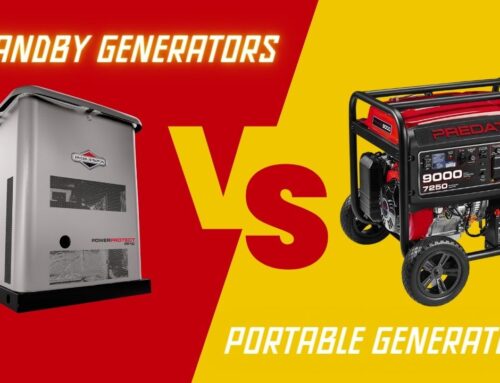A standby generator can be a vital investment for homeowners or businesses that need reliable backup power in case of a power outage. While the benefits of having a standby generator are clear, there are some important considerations to keep in mind when it comes to the lifespan of these devices. In this article, we will explore how long standby generators typically last and factors that can affect their lifespan.
Firstly, it’s important to understand what a standby generator is and how it works. A standby generator is a device that is designed to automatically turn on and provide backup power to your home or business when there is a power outage. They are typically fueled by natural gas or propane and are permanently installed outside your property, similar to an air conditioning unit. When the power goes out, the standby generator detects the outage and turns on automatically, supplying power until the main power is restored.
So, how long do standby generators typically last? The answer depends on several factors, including the type of generator, how often it’s used, and how well it’s maintained. In general, a standby generator can last anywhere from 10 to 30 years, with an average lifespan of around 20 years. However, this can vary significantly depending on the specific model and how it’s used and maintained.
One of the most important factors affecting the lifespan of a standby generator is how often it’s used. If the generator is only used occasionally, it will likely last longer than one that is used frequently. For example, if you live in an area that experiences frequent power outages, your standby generator will be used more often than if you only experience occasional outages. This can affect the lifespan of the generator, as frequent use can cause more wear and tear on the device.
Another important factor to consider is the type of generator you have. There are two main types of standby generators: air-cooled and liquid-cooled. Air-cooled generators are typically less expensive and have a shorter lifespan than liquid-cooled generators. Air-cooled generators typically last around 10-15 years, while liquid-cooled generators can last up to 30 years with proper maintenance.
Maintenance is another critical factor in the lifespan of a standby generator. Regular maintenance can help ensure that the generator operates efficiently and lasts as long as possible. Some basic maintenance tasks that should be performed regularly include:
-
- Changing the oil and filter
-
- Checking the battery and replacing it if necessary
-
- Inspecting the air filter and cleaning or replacing it if necessary
-
- Checking the spark plugs and replacing them if necessary
-
- Inspecting the wiring and connections
It’s also important to have a professional inspect and service your standby generator annually. They can check the generator’s performance, identify any potential issues, and make any necessary repairs or adjustments.
Finally, it’s worth noting that environmental factors can also affect the lifespan of a standby generator. For example, if your generator is exposed to harsh weather conditions, such as extreme heat or cold, it may not last as long as one that is protected from the elements. Similarly, if your generator is located in an area with high humidity or salty air (such as near the coast), it may experience more corrosion and wear over time.
Standby generators can last anywhere from 10 to 30 years, with an average lifespan of around 20 years. Factors that can affect their lifespan include the type of generator, how often it’s used, how well it’s maintained, and environmental factors. If you’re considering investing in a standby generator, it’s important to choose a high-quality model, have it installed by a professional, and perform regular maintenance to ensure it lasts as long as possible. With proper care and maintenance, a standby generator can provide reliable backup power for many years to come.





